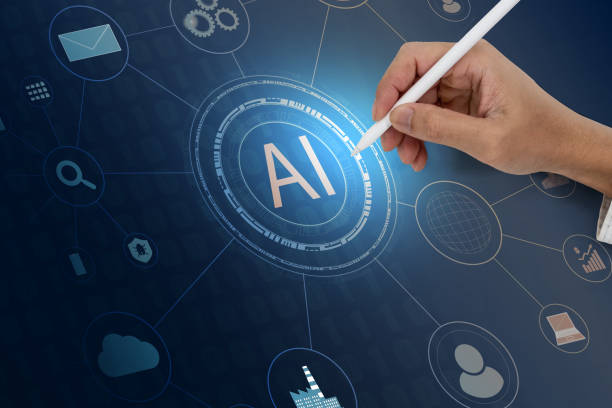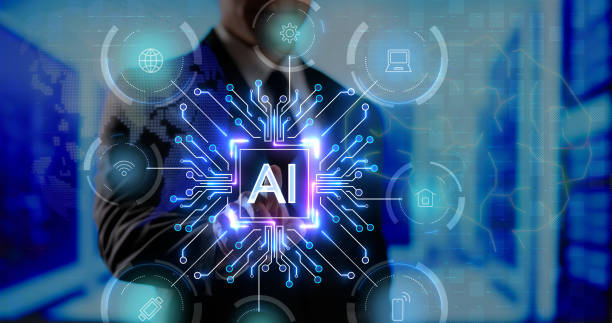Introduction to AI Robots: What They Are and Their Applications
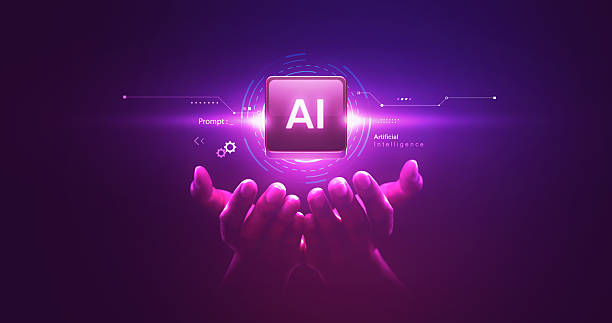
#AI_Robot (AI Robot) is a combination of two separate fields: artificial intelligence and robotics.
In simple terms, it’s a robot that, using algorithms and artificial intelligence techniques, is capable of performing tasks that usually require human intelligence.
These tasks can include learning, reasoning, problem-solving, environmental perception, and interaction with humans.
AI robots are increasingly used in various industries such as manufacturing, healthcare, customer service, and even space exploration.
Common applications of AI robots include industrial robots for performing repetitive and dangerous tasks, service robots for assisting the elderly or disabled, medical robots for precise surgeries, and space robots for exploring other planets.
The main difference between regular robots and AI robots lies in their degree of independence and their ability to adapt to different conditions.
Regular robots are typically programmed to perform specific tasks, and if there’s a change in the environment or task, they require reprogramming.
In contrast, AI robots are capable of learning from data and experiences and can automatically adapt to new conditions.
This feature allows them to perform more complex tasks and operate more effectively in unpredictable environments.
To better understand this, consider the example of an AI robot on a production line.
If a regular robot encounters a defect in a part, it stops and requires human intervention.
However, an AI robot can detect the defect, identify its cause, and automatically adjust its settings to prevent its recurrence.
AI robots also use various sensors to understand their surrounding environment and extract relevant information using image processing algorithms, sound processing, and other AI techniques.
This information is used for movement planning, decision-making, and interaction with humans.
For example, an AI robot in a hospital can use cameras and microphones to detect the movements and speech of patients and notify nurses if necessary.
Artificial intelligence (AI) plays a key role in the development and advancement of these robots.
Are you frustrated with the low conversion rate of your online store?
Rasaweb offers a definitive solution with professional online store website design!
✅ Increase your sales and revenue
✅ Exceptional user experience for your customers
⚡ Get a free consultation now!
Key Components of an AI Robot: Hardware and Software
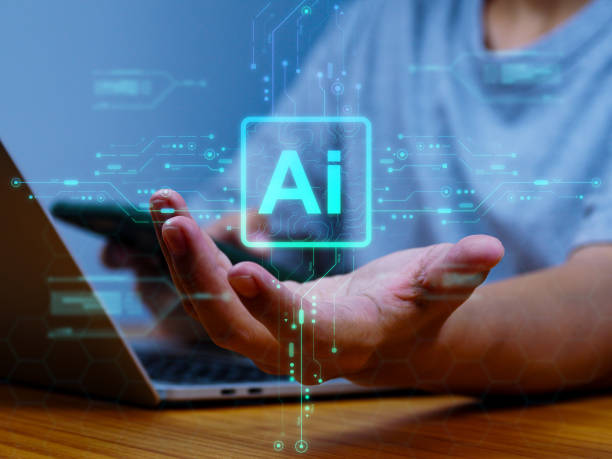
An AI robot consists of two main parts: hardware and software.
The hardware section includes the physical components of the robot, such as the body, motors, sensors, and processors.
The robot’s body is usually made of lightweight and durable materials and is responsible for holding and protecting the other components.
Motors are used to move the robot and perform various tasks.
Sensors are used to collect information from the surrounding environment and can include cameras, microphones, temperature sensors, pressure sensors, and so on.
Processors are the robot’s brain and are responsible for processing information and controlling the robot’s operation.
The software section includes algorithms and computer programs that allow the robot to perform various tasks.
These algorithms can include machine learning algorithms, image processing, sound processing, motion planning, and so on.
Machine learning algorithms allow the robot to learn from data and experiences and improve its performance.
Image and sound processing algorithms allow the robot to understand its surrounding environment and extract relevant information.
Motion planning algorithms allow the robot to plan its movements effectively and avoid collisions with obstacles.
In short, the hardware and software of an AI robot work together in harmony so that the robot can perform various tasks and interact with its surrounding environment.
To develop software for these robots, skills in programming and complex algorithms are essential.
In the hardware design of an AI robot, engineers must consider factors such as weight, size, power, and durability.
An important point about AI robots is that processing power and accurate sensors enable them to understand the environment and make smarter decisions.
For example, an AI robot in a warehouse can use cameras and positioning sensors to identify goods and automatically move them to the desired location.
Types of AI Robots: From Industrial to Service
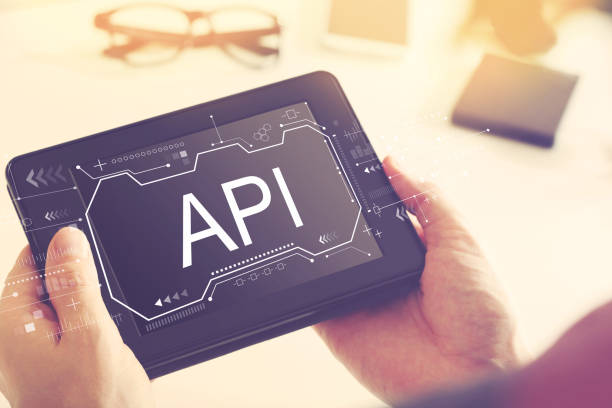
AI robots can be categorized into different types based on their application.
Industrial robots are used to perform repetitive and dangerous tasks in factories and production lines.
These robots usually have strong and precise robotic arms and can perform tasks such as welding, painting, packaging, and assembling parts.
Service robots are used to help people perform everyday tasks.
These robots can include cleaning robots, nursing robots, delivery robots, and guide robots.
Medical robots are used to assist doctors in diagnosing and treating diseases.
These robots can include surgical robots, rehabilitation robots, and dispensing robots.
Space robots are used to explore other planets and conduct scientific research in space.
These robots must be able to withstand harsh space conditions such as extreme temperatures, dangerous radiation, and lack of oxygen.
AI robots also have numerous applications in the military sector, including reconnaissance robots, bomb disposal robots, and combat robots.
In the field of education, robots can be used as teaching assistants for students.
They can explain complex concepts in a simple and engaging way and help students with their homework.
In the agricultural industry, robots can be used to perform tasks such as harvesting crops, spraying pesticides, and irrigating.
These robots can use sensors and cameras to accurately monitor farm conditions and automatically make the necessary adjustments.
This diversity of applications demonstrates the high potential of robotics and artificial intelligence to improve human lives.
AI robots are capable of operating in harsh and dangerous conditions and preventing accidents.
For example, an AI robot can enter a burning building instead of a human and search for trapped people.
| Robot Type | Application |
|---|---|
| Industrial | Welding, Painting, Assembly |
| Service | Cleaning, Nursing, Delivery |
| Medical | Surgery, Rehabilitation, Dispensing |
| Space | Planetary Exploration, Scientific Research |
Challenges and Limitations of AI Robots: Obstacles Ahead

Despite significant advances in the field of robotics and artificial intelligence, AI robots still face numerous challenges and limitations.
One of the most important challenges is the complexity of developing and implementing these robots.
The design and construction of an AI robot requires expertise in various fields such as mechanical engineering, electronic engineering, computer science, and artificial intelligence.
In addition, collecting sufficient data to train the robots and ensuring their proper functioning in different conditions is a major challenge.
Another important challenge is the ethical issues associated with the use of AI robots.
For example, questions arise about the accountability of robots in the event of errors or harm, protecting the privacy of individuals when robots are used to collect information, and the impact of robots on the labor market and employment.
There are also concerns about the misuse of AI robots in the military and security fields.
The high cost of developing and maintaining AI robots is another obstacle to the widespread use of these robots.
AI robots require expensive parts, complex software, and specialized personnel for maintenance and repair.
Also, the capabilities of AI robots are still limited and cannot replace humans in all areas.
Robots have weaknesses in understanding emotions, creativity, and decision-making in complex situations.
However, with further advances in the field of artificial intelligence, it is expected that these limitations will be overcome and robots will be able to play a more important role in human lives.
To address these challenges, there is a need for collaboration between different experts, the development of appropriate laws and regulations, and increased public awareness about the benefits and disadvantages of AI robots.
Do you dream of a thriving online store but don’t know where to start?
Rasaweb is your comprehensive online store website design solution.
✅ Attractive and user-friendly design
✅ Increase sales and revenue⚡ Get a free consultation
The Future of AI Robots: Prospects and Possibilities
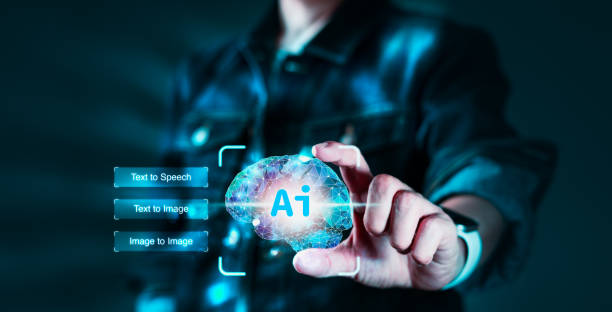
The future of AI robots is very bright and full of potential.
With continuous advances in the field of artificial intelligence and robotics, AI robots are expected to play a more important role in human lives.
In the future, robots can assist humans in various fields such as healthcare, education, transportation, manufacturing, customer service, and even art and entertainment.
It is predicted that AI robots will be able to perform more complex tasks in the future and will be able to interact with humans more naturally and effectively.
For example, AI robots in the future can provide services to patients as nurses and doctors in hospitals, teach students as teachers in schools, transport passengers as taxi and bus drivers on the streets, and help produce goods as workers in the production line in factories.
In addition, robots can play an important role in areas where humans are unable to operate, such as exploring other planets, cleaning up the environment, and conducting scientific research.
However, to realize this vision, we must address the existing challenges and limitations and ensure the responsible development and use of AI robots.
This includes developing appropriate laws and regulations, increasing public awareness about the benefits and disadvantages of robots, and promoting collaboration between different experts.
We must also pay attention to the ethical issues associated with the use of AI robots and prevent their misuse.
With the development of AI robots, human lives will become easier, safer, and more productive.
AI robots can become one of the most important technologies of the 21st century and have a profound impact on human society.
Machine Learning and Its Role in the Development of AI Robots
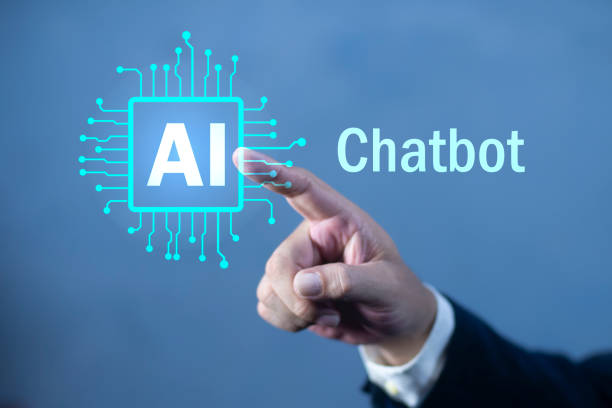
Machine Learning is one of the main branches of artificial intelligence that plays a vital role in the development of AI robots.
Machine learning allows robots to learn from data and improve their performance without the need for explicit programming.
In other words, robots can use machine learning algorithms to identify patterns and relationships in data and use them for decision-making, prediction, and problem-solving.
This feature allows robots to adapt to new conditions and perform more complex tasks.
Machine learning algorithms allow robots to learn from their experiences and improve their performance over time.
This enables robots to perform tasks that were previously impossible for them.
For example, an AI robot trained using machine learning can identify patterns in medical images and assist doctors in diagnosing diseases.
Or an AI robot in a factory can predict potential problems by analyzing production data and prevent them from occurring.
Machine learning enables robots to operate more effectively in dynamic and unpredictable environments.
AI robots can use sensors and cameras to collect information about their surrounding environment and use machine learning algorithms to analyze this information and make appropriate decisions.
In fact, machine learning gives robots the power of thinking and reasoning, enabling them to act intelligently.
Using machine learning, AI robots can become one of the most important tools for humans in solving complex problems and improving lives.
AI Robot Programming: Languages and Tools Needed
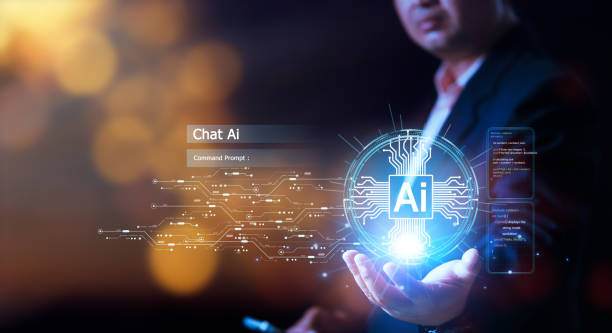
AI robot programming requires knowledge and skills in various fields such as computer science, artificial intelligence, robotics, and mathematics.
Different programming languages are used for programming robots, each with its own advantages and disadvantages.
Common programming languages for robots include Python, C++, Java, and MATLAB.
Python, due to its simplicity and readability, is one of the most popular languages for programming robots.
C++, due to its speed and efficiency, is suitable for programming complex and real-time robots.
Java, due to its ability to run on different platforms, is used for programming web-based and mobile-based robots.
MATLAB, due to having powerful tools for simulating and analyzing data, is suitable for developing control algorithms and AI for robots.
In addition to programming languages, various tools and frameworks are also used to develop AI robots.
These tools include ROS (Robot Operating System), TensorFlow, PyTorch, and OpenCV.
ROS is an open-source framework that enables the development and integration of robotic software.
TensorFlow and PyTorch are machine learning frameworks used for training robots and developing AI algorithms.
OpenCV is an open-source library that includes various functions for image processing and machine vision and is used for developing robot vision systems.
For AI robot programming, programmers need to be familiar with the basic concepts of artificial intelligence such as machine learning, neural networks, natural language processing, and machine vision.
Also, familiarity with robotics topics such as kinematics, dynamics, control, and sensors is also necessary.
AI robot programmers must be able to implement AI algorithms, design and control robotic systems, and develop and integrate robotic software using various tools and frameworks.
AI Robot Security: Threats and Solutions
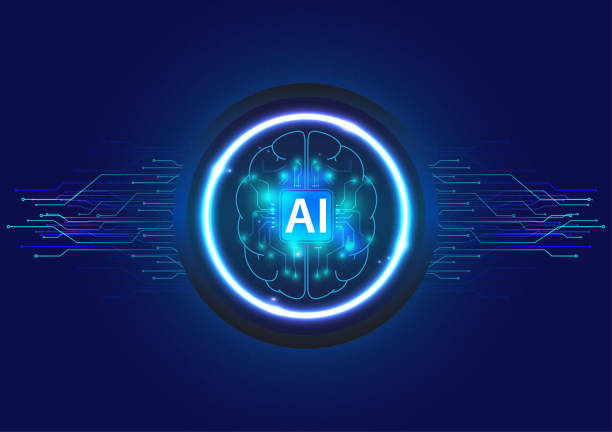
With the increasing use of AI robots in various industries, the security of these robots has become an important and vital issue.
AI robots, like any other computer system, are exposed to various security threats that can lead to malfunction, data theft, harm to people and property, and even misuse of robots for malicious purposes.
Common security threats to robots include cyber attacks, intrusion into control systems, manipulation of sensors and data, and the use of robots to carry out physical attacks.
Cyber attacks can lead to robots malfunctioning, theft of sensitive information, or changes in robot behavior.
Intrusion into control systems can allow attackers to take control of robots and use them to carry out their own goals.
Manipulation of sensors and data can cause robots to receive incorrect information and make incorrect decisions.
The use of robots to carry out physical attacks can lead to harm to people and property.
To counter these threats, various security measures need to be considered in the design, development, and deployment of AI robots.
These measures can include the use of strong encryption, two-factor authentication, intrusion detection systems, and firewalls.
Also, appropriate security training needs to be provided to robot users and operators so that they can identify security threats and prevent them from occurring.
In addition, appropriate laws and regulations need to be developed for the use of AI robots to prevent the misuse of these robots and to protect the rights of individuals and society.
AI robot security is a complex and multifaceted issue that requires collaboration between different experts, the development of security standards, and increased public awareness.
| Security Threat | Solution |
|---|---|
| Cyber Attacks | Encryption, Intrusion Detection System |
| System Intrusion | Two-Factor Authentication, Firewall |
| Sensor Manipulation | Data Validation, Secure Sensors |
| Physical Attacks | Physical Protection, Alarm Systems |
Does your current corporate website present a worthy image of your brand and attract new customers?
If not, turn this challenge into an opportunity with Rasaweb’s professional corporate website design services.
✅ Significantly improves your brand’s credibility and image.
✅ Paves the way for attracting new leads and customers for you.
⚡ Contact Rasaweb now for a free and specialized consultation!
Ethical Aspects of AI Robots: Considerations and Responsibilities

The widespread use of AI robots raises important ethical issues that require careful attention and consideration.
One of the most important of these issues is the accountability of robots in the event of errors or harm.
Questions such as who is responsible for the damage caused by the malfunctioning of an AI robot, the manufacturer, the programmer, the user, or the robot itself? and how can this responsibility be determined? are among the complex issues that need to be answered.
Another issue is protecting the privacy of individuals when robots are used to collect and process information.
AI robots are capable of collecting a lot of information about people, and this information can be used for various purposes.
How can the misuse of this information be prevented and the privacy of individuals protected?
The impact of AI robots on the labor market and employment is another important ethical issue.
Robots are capable of performing many of the tasks that were previously performed by humans, and this can lead to job losses and increased unemployment.
How can these negative impacts be reduced and a fair transition to the robotic economy be ensured? There are also concerns about the misuse of AI robots in the military and security fields.
Robots can be used to carry out automated attacks, espionage, and other malicious activities.
How can these misuses be prevented and the responsible use of robots ensured?
To resolve these ethical issues, there is a need to develop appropriate laws and regulations, establish ethical standards, and promote public awareness about the benefits and disadvantages of AI robots.
It is also necessary for experts in artificial intelligence, robotics, law, philosophy, and ethics to work together to find appropriate solutions to these issues.
The responsible development and use of AI robots requires attention to ethical aspects and the creation of an appropriate legal and ethical framework.
AI Robots in Iran: Current Status and Future
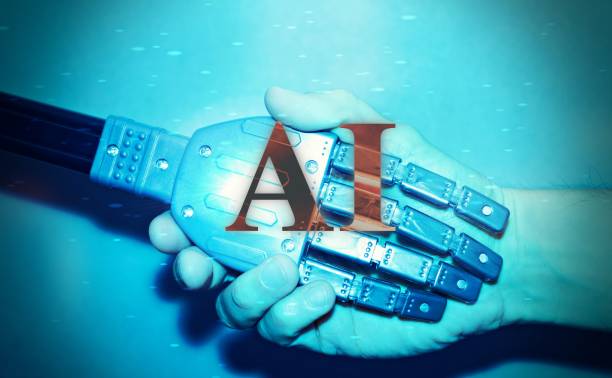
In recent years, significant efforts have been made in the field of AI robot development in Iran.
Various universities and research centers are conducting research projects in this field, and knowledge-based companies are also developing and commercializing AI robots for various applications.
However, the status of AI robot development in Iran is still in its early stages, and there is a large gap with leading countries in this field.
Challenges facing the development of AI robots in Iran include a shortage of financial resources, a shortage of specialized personnel, lack of access to advanced technologies, and lack of appropriate infrastructure.
However, there is a high potential for AI robot development in Iran.
The existence of a young and talented workforce, the existence of strong universities and research centers, and the need to solve various problems in industries and services provide suitable opportunities for the development of AI robots in Iran.
To develop AI robots in Iran, it is necessary for the government and the private sector to work together to make the necessary investments in this field, train the required specialized personnel, provide access to advanced technologies, and create appropriate infrastructure.
Also, appropriate laws and regulations need to be developed for the use of AI robots to prevent the misuse of these robots and to protect the rights of individuals and society.
Given Iran’s high potential in the field of artificial intelligence and robotics, it is expected that we will see significant progress in the field of AI robot development in Iran in the near future.
AI robots can play an important role in the economic, social, and cultural development of Iran and help solve various problems in the country.
Frequently Asked Questions
| Question | Answer |
|---|---|
| What is an AI Robot? | An AI Robot is a machine capable of understanding its environment, reasoning, learning, and making decisions to perform tasks independently. |
| What is the difference between regular robots and AI robots? | Regular robots perform repetitive tasks based on prior programming, while AI robots can learn from experience, interact dynamically with the environment, and even behave in ways that resemble human intelligence. |
| What are the main applications of AI robots? | They are used in industries (manufacturing, assembly), medicine (surgery, diagnosis), services (customer support, household), exploration (space, underwater), and many other fields. |
| What technologies are used in the construction of AI robots? | Machine Learning, Computer Vision, Natural Language Processing, Deep Learning, and Robotics are among the key technologies. |
| Can AI robots have emotions? | Currently, robots do not have emotions in the human sense. They can recognize emotions and react to them, but they do not experience emotions themselves. |
| What are the main challenges in the development of AI robots? | Safety, reliability, ethics, autonomy, adaptability to complex environments, and natural interaction with humans are important challenges. |
| How are AI robots trained? | They are usually trained using large volumes of data, machine learning algorithms, and deep learning to identify patterns and make decisions. |
| Examples of AI robots in everyday life? | Smart robotic vacuum cleaners, customer support chat robots, self-driving cars, and surgical robots in hospitals. |
| Are AI robots a threat to human jobs? | Some repetitive jobs may be automated, but at the same time, robots can increase productivity and create new jobs in the development, maintenance, and monitoring of these systems. |
| How is the future of AI robots predicted? | They are expected to become smarter, more autonomous, and capable of performing more complex tasks, and to interact more closely with humans in different environments. |
And other services of Rasa Web Advertising Agency in the field of advertising
Smart Customer Journey Map: Designed for businesses looking to analyze customer behavior through attractive UI design.
Smart Digital Branding: A combination of creativity and technology to increase website visits by using real data.
Smart Reportage: A novel service for increasing customer acquisition through dedicated programming.
Smart Reportage: A creative platform for improving SEO rankings using real data.
Smart Data Analysis: A professional solution for digital branding with a focus on smart data analysis.
And over hundreds of other services in the field of internet advertising, advertising consulting, and organizational solutions
Internet Advertising | Advertising Strategy | Advertorial
Sources
Artificial Intelligence Robots and Robots Are Coming
,Intelligent Robot A Robot That Can Heavily Disrupt This Task
,What Does the Application of Intelligent Robots in the Cyber World Say About History?
,Intelligent Robots and Their Applications
? Are you ready to transform your business in the digital world? Rasa Web Digital Marketing Agency, with expertise in professional website design, SEO, and content marketing, offers a comprehensive solution for your growth and visibility. Discover your brand’s true potential with us.
📍 Tehran, Mirdamad Street, Next to the Central Bank, South Kazerun Alley, Ramin Alley No. 6

